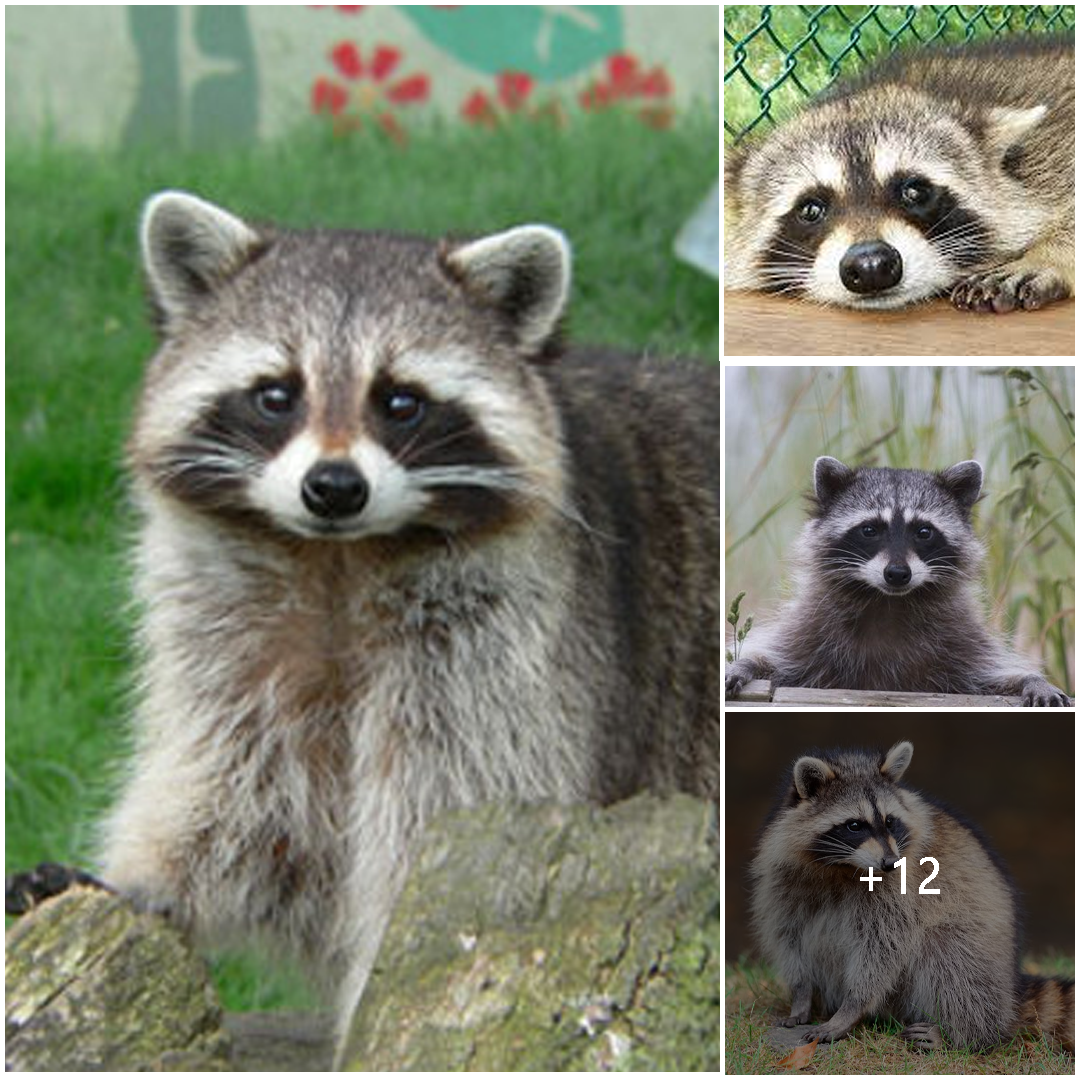
Raccoon: The Clever and Adaptable Masked Bandit
Introduction: The raccoon (Procyon lotor) is a charismatic and highly adaptable mammal native to North America. Recognizable by its distinctive black “mask” of fur around its eyes and ringed tail, the raccoon has earned a reputation for its intelligence, dexterity, and resourcefulness.
Physical Characteristics: Raccoons have a robust build with a dense, grayish-brown fur coat that helps insulate them in various climates. Their most notable feature is the black markings around their eyes, which resemble a mask. Raccoons also have dexterous front paws with long, slender fingers that enable them to manipulate objects with ease.
Habitat and Distribution: Raccoons are found throughout North America, from southern Canada to Panama. They inhabit a wide range of habitats, including forests, wetlands, urban areas, and suburban neighborhoods. Raccoons are highly adaptable and can thrive in diverse environments, making them one of the most widespread mammal species on the continent.
Behavior and Diet: Raccoons are opportunistic omnivores with a varied diet that includes fruits, berries, nuts, insects, small mammals, birds, eggs, and even garbage. Their ability to exploit a wide range of food sources contributes to their success in urban environments. Raccoons are primarily nocturnal, although they may also be active during the day, especially in areas with less human disturbance.
Social Structure: Raccoons are solitary animals for much of the year, but they may form loose social groups, particularly during the mating season and when resources are abundant. Male raccoons, called boars, may establish territories that overlap with those of several females, called sows. Female raccoons typically give birth to a litter of three to five kits in the spring, which they raise in dens located in trees, burrows, or man-made structures.
Adaptations and Intelligence: Raccoons are renowned for their problem-solving skills and adaptability. They have keen senses of smell, sight, and touch, which help them locate food and navigate their environment. Raccoons are also skilled climbers and swimmers, able to escape predators and access food sources in trees, waterways, and urban infrastructure. Their ability to open containers, manipulate objects, and navigate complex environments has earned them the nickname “masked bandits.”
Human-Wildlife Conflict: While raccoons are valued for their role in controlling pest populations and contributing to ecosystem health, they can also be considered nuisance animals in urban areas. Raccoons may raid garbage cans, damage property, and spread diseases such as rabies and raccoon roundworm. Managing human-wildlife conflict requires implementing strategies to minimize attractants and encourage coexistence between humans and raccoons.
Conservation Status: Raccoons are not currently considered a threatened species, and their populations are stable across much of their range. However, habitat loss, urbanization, and vehicle collisions pose ongoing threats to raccoon populations in some areas. Conservation efforts focus on protecting natural habitats, mitigating human-wildlife conflict, and promoting responsible waste management practices.
Conclusion: Raccoons are fascinating and adaptable creatures that have successfully colonized a wide range of habitats across North America. Their intelligence, resourcefulness, and ability to thrive in urban environments make them both a symbol of resilience and a source of human-wildlife conflict. Understanding raccoon behavior, ecology, and conservation needs is essential for promoting harmonious coexistence between humans and wildlife in shared landscapes.





